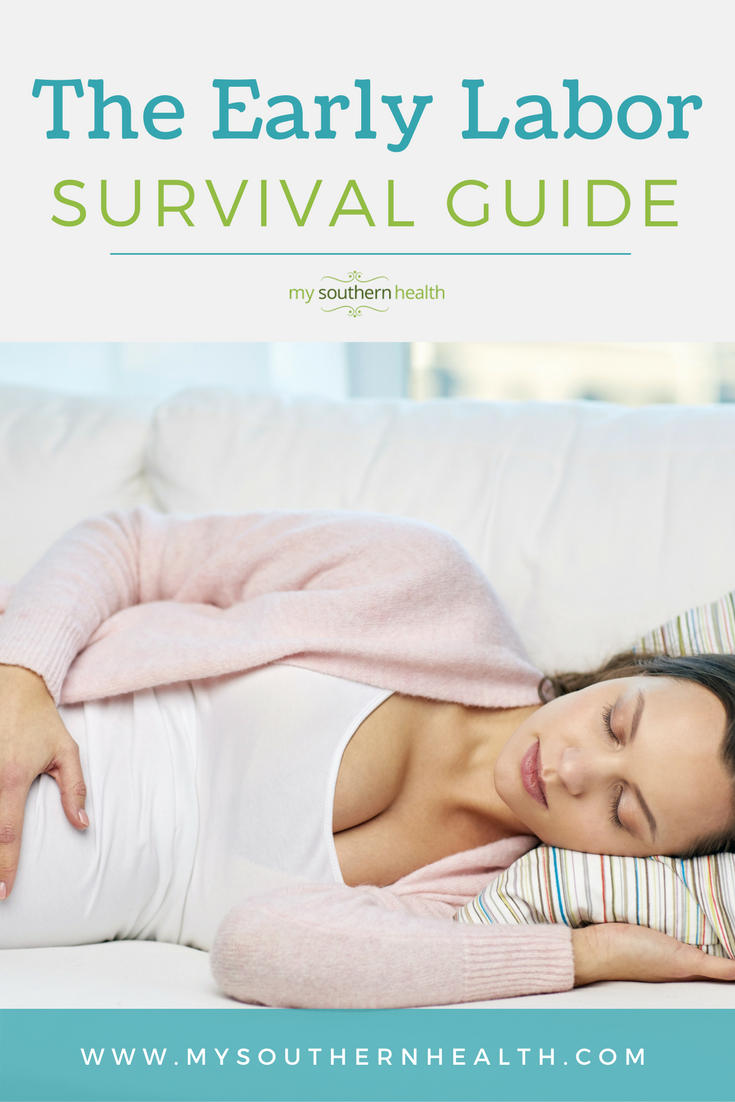Here are some tips from a certified nurse midwife — and mother — on how to cope during early labor.
At 39 weeks and three days pregnant with my first, I remember slogging through seeing patients at the office, stopping a few times every hour to breathe as I felt a stabbing pain in my back immediately followed by a tightening in my abdomen. I kept thinking to myself that I could do this for days before going into labor. This couldn’t possibly be labor, I thought, because labor was only going to get worse, and besides, I didn’t have any of the other signs like losing my mucus plug, or bloody show or water breaking. By that evening, when I finally admitted to myself that I might be in labor, I was between seven and eight centimeters dilated and ready to go to the hospital.
From the onset of contractions until about six centimeters of dilation, is tricky. It can be physically and mentally fatiguing.
Early labor can be long, sometimes lasting a full 24 hours in first-time mothers. Research has shown that delaying admission to the hospital until active labor is well established is associated with lower rates of interventions, including Cesarean sections. For most women, staying home in early labor is recommended.
Coping with early labor
So what can be done during early labor to help mom cope? And how to know when it’s moving into active labor?
- Ignore labor until it demands your attention. Contractions in early labor are not comfortable, but they usually are less than a minute long and may not be in a really regular pattern. Timing contractions when they are 10-15 minutes apart is not necessary because most women will contract much more frequently before giving birth and it can make labor seem to drag on. Distractions like walking, napping and little tasks around the house, will make the time go by faster.
- Fatigue is the enemy of labor. Sleep during the last weeks of pregnancy can be a challenge anyway, and labor may start during the night. Resting during early labor, napping, drinking plenty of fluids, eating light meals can all help to maintain your energy, which you will need during active labor and birth.
- Hiring a doula can be a great resource to help with laboring at home and helping to know when to go to the hospital or birth center. A doula is a non-medical person, trained to assist with supporting mothers and families in labor.
- Hydrotherapy, which is a fancy way of saying using the bath or shower, can be a great way to stay comfortable.
- As labor progresses, contractions become closer together and stronger. As you move into active labor often you can no longer walk, talk or chew gum through contractions and have to stop, concentrate and breath. Many providers like the 5-1-1 rule, which is to call when contractions are five minutes apart, lasting one minute and have been like that for one hour.
As always, talk with your provider as these suggestions are for full-term, low-risk pregnancies.
Early labor is an exciting transition from waiting for baby to actively bringing the long-awaited new person into the world. It is, though, a terrible spectator sport, so laying low and staying home in early labor may actually be in both mom and baby’s best interest.
This post was written by Bethany Sanders, a certified nurse midwife and cares for women at the West End Women’s Health Center and Vanderbilt Primary Care Mt. Juliet. While originally from the Midwest, she is thrilled to have called the South home since graduating Vanderbilt in 2006. When not attending births or measuring pregnant bellies she can be found at the local park chasing around her two young children and discussing babywearing, cloth diapers and breastfeeding.


Expecting or considering having a baby? Know all your pregnancy care options available through Vanderbilt Women’s Health.


